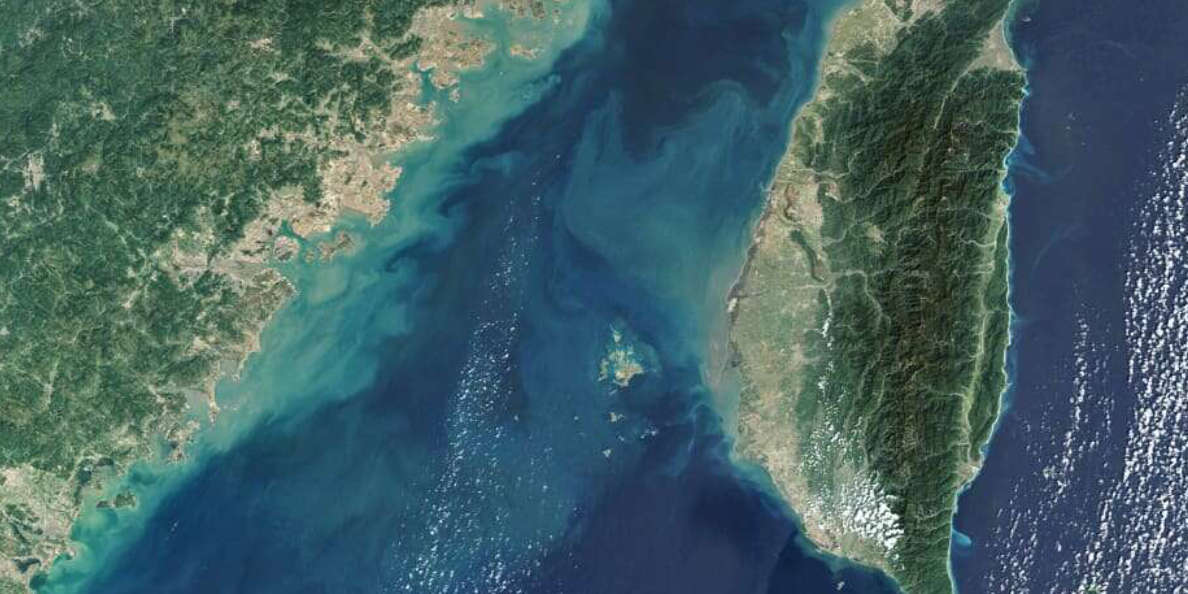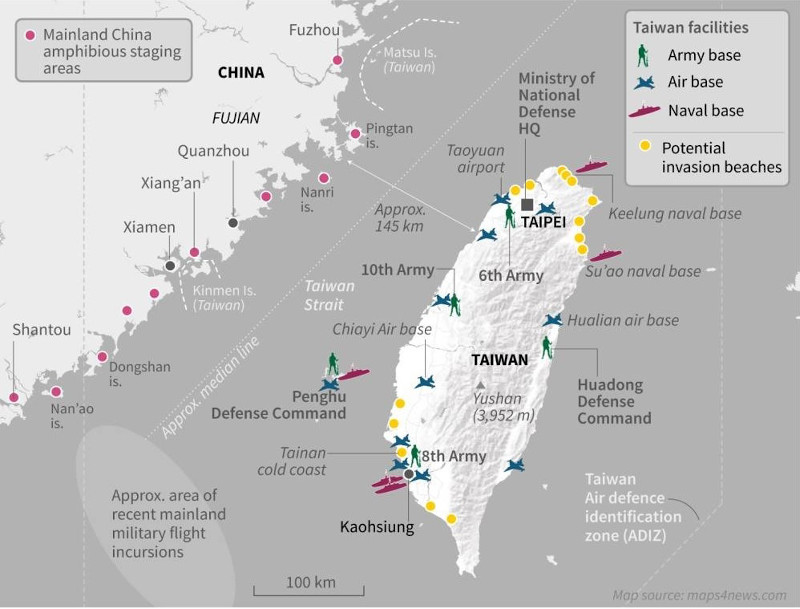"The first battle of the next war"
Run a total of 24 times, with each setup resulting from different combinations of all variables involved, each iteration was played under five types of scenarios (base, pessimistic, optimistic, the "Taiwan stands alone", and the "Ragnarok" scenarios). The first kind of them incorporated only the most likely values in order to draft the key assumptions. Under it, the invasion begins with "an opening bombardment [that] destroys most of Taiwan's navy and air force in the first hours of hostilities". Shortly after, however, the invasion ends up floundering in the face of China's "struggle to build supplies and move inland".
On the other hand, the "Taiwan stands alone" scenario examines a hypothetical conflict in which Taiwan would not enjoy any assistance from the US; an abstention also implying that no other country is willing to help the island either. Under this premise, Chinese forces slowly progress in their invasion until Taiwanese authorities decide to capitulate several weeks after, with the island being handed over to Beijing.
Lastly, the "Ragnarok" scenario aimed to disclose all the necessary conditions for a Chinese victory against Taiwanese resistance enjoying strong support by the US. Through it, it was revealed China would only need to deny US airpower (both of its fighter attack and bombers). This way, should it attempt to use tankers with Guam-based aircraft, it would be vulnerable against the PLA's ballistic missiles and leave it without sufficient power.
Yet, most -if not all- scenarios in which Chinese forces fail to reach their goal (21 out of the 24 played), hold a common underlying assumption: Taiwan must be able to resist the initial strike and hold on until the arrival of US and allied forces. Should they fail to do so, consequences would most likely be catastrophic for them.
The main conclusions reached through the exercise (aside from the obvious fact that the number of human casualties would reach levels we have never seen for many decades) suggest four necessary conditions which should have to be fulfilled in order to ensure a Chinese invasion can be properly repelled: Taiwanese forces holding the line and being able to control the Chinese, the US using its instructions in Japan as platforms for combat operations, the American forces being able to strike at the Chinese fleet fast from outside their defensive area, and assuming that the Ukraine model (by which allied nations send weapons and material without sending troops directly into the combat arena) is not -and should not be- applicable to Taiwan.
The implication that US troops would have to engage in direct confrontation with the enemy at the Strait if United States aspires to have any serious options to succeed is a fundamental notion to consider. For years now, many have underlined the need for a strong, permanent presence of the US Navy around the waters of South East Asia as a perquisite to control Chinese naval expansion. As professor Jim Holmes puts it, "to counter China's cumulative strategy, US, allied, and partner naval forces must not just show up at hotspots but stay, making the point that China would not necessarily prevail should battle erupt."
But more importantly, the isolated nature of the small island also means any lack of immediate support with equipment and ammunition would most certainly be fatal for the final outcome of the conflict. In other words, having all the equipment, weapons and troops ready before the operation begins is vital to succeed against Beijing. "The longer the United States delays entering the war, the more difficult the fight," the report suggests.
Thus, in order to make this easier to achieve, the authors provide with a series of recommendations on how to prepare for this scenario. Among all of them, worth of underlining are the need to "fortify and expand air base capacity in Japan and Guam", the importance of relying on "smaller and more survivable ships" against Chinese anti-ship missiles, and developing "rescue mechanisms to deal with crippled ships and multiple sinkings" (which will take place).
All things considered, a challenging and daunting enterprise.
In spite of this, "a lasting victory in the Taiwan Strait is possible", professor Holmes believes, "and worth striving for should China mount an amphibious assault across the strait." Such a victory, however, would be in any case diminished by the geographical configuration of the region, which gives China an endless hope in the face of defeat: neither Taiwan or the mainland are going to move. Thus, "Beijing could try for a rematch at a more auspicious time, and it lays colossal weight on the island," Holmes argues.
Nevertheless, at the end of the day, the game's conclusions speak for themselves: both parties would aspire to a pyrrhic victory, and tens of thousands of lives will be lost in the case of a conflict over Taiwan.


